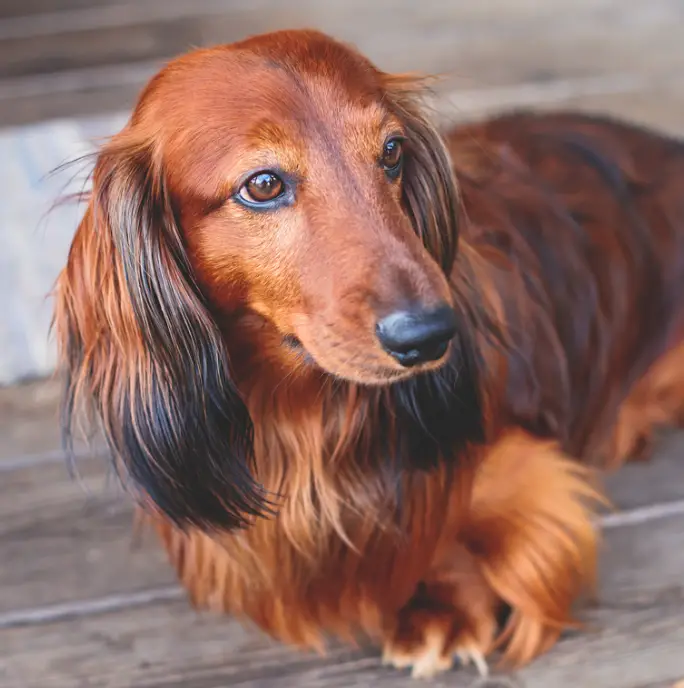Dachshund puppies are known for their adorable looks and playful personalities, but they can be stubborn when it comes to training. That doesn’t mean they can’t learn though. With some persistence and patience, you can teach your Dachshund puppy to have good behavior. In this article, we’ll discuss how to train a Dachshund puppy step by step.
Start with Basic Commands
The first thing you should teach your Dachshund puppy is commands such as “sit,” “come,” and “stay.” These commands are essential for training your puppy, and they also build trust between you and your puppy. Start by showing your puppy how to sit by holding a treat in front of their nose.
As they follow the treat, move it above their head. Their nose should follow the treat, and their bottom should go down. Once they sit, give them the treat and praise them. Practice this a few times every day until your puppy can sit on command.
Use Positive Reinforcement
Positive reinforcement is the most effective way to train any dog, including Dachshund puppies. Whenever your puppy does something good, such as following a command, be sure to give them lots of praise and a treat. Use a high-pitched and happy voice to show them that they have done well.
Avoid using punishments or scolding as this will only confuse your puppy and make them anxious. Positive reinforcement reinforces good behavior and encourages your puppy to repeat it.
Use Short Training Sessions
Dachshund puppies have short attention spans, so it is important that your training sessions are brief and frequent. Aim for 10 minutes of training per session, two or three times a day. This type of training is less overwhelming for your puppy and helps avoid feelings of boredom.
Moreover, it will allow your puppy to see training as something fun, not just a task to complete. Make the training time a special bonding moment between you and your Dachshund puppy.
Socialize Your Dachshund Puppy
Socialization is critical for your Dachshund puppy’s well-being. Expose them to new people, dogs, and environments, especially during their first few months of life. The more socialized they are, the less likely they are to develop negative behaviors like fear or aggression.
Arrange playdates with other dogs or take your Dachshund puppy to the park for a walk. The more comfortable they are in new environments, the better. The key is to find places where they can play, explore and meet other dogs and people.
Leash Training
Teaching your Dachshund puppy how to walk on a leash is another important aspect of their training. Walks are important exercise, but having your furry friend drag you down the street doesn’t make for a relaxing experience.
Start with having your puppy wear a collar around the house so they get used to it. Then attach a leash, allow your puppy to drag it around, and then pick it up and start teaching them how to walk beside you.
Use reward-based training as always and every time your Dachshund puppy walks by your side, give them a treat and lots of praise. Practice walking for short periods and gradually increase the distance you go.
Potty Training
Potty training your Dachshund puppy can take a little longer than other breeds because they have small bladders. But with consistent and positive training, your puppy will learn where to go and where not to.
Start by creating a consistent daily routine, especially for feeding time. Take your puppy outside after meals, after naps, and after playtime. If you stick to a schedule, your puppy will learn when it’s time to relieve themselves.
Use positive reinforcement when they go in the correct spot, use a specific word or phrase when they go potty to reinforce good behavior, and give them treats and praise accordingly.
Crate Training
Crate training is a great way to keep your puppy safe, secure, and happy. It also helps with potty training, as puppies will typically not go in their crate, as long as it’s the right size for them. The crate should be big enough for your puppy to stand up and turn around.
When it comes to crate training, make it a positive experience for your puppy. Start by leaving the door open and provide your puppy with some treats and toys. Once your puppy is used to the crate, you can start closing the door for short periods, increasing the time your puppy spends inside gradually.
Teach Boundaries
It’s essential to teach your Dachshund puppy what’s acceptable in the home and what’s not. Teach your puppy which rooms are off-limits and which they are allowed in. This is important for safety and helps prevent destructive chewing behavior.
Use baby gates or closed doors to keep your puppy out of specific rooms, and when you catch them behaving incorrectly, say “No” and redirect them to a different activity.
Manage Separation Anxiety
Dachshund puppies are known for their separation anxiety. They are prone to negative behaviors like destructive chewing and excessive barking when they’re left alone. Therefore, it’s important to teach them independence.
Gradually increase the time they spend alone, being sure to provide plenty of toys and other distractions that help them pass the time. When you return, greet them calmly, and don’t make a big fuss over them.
Train Regularly
Training should not stop once your Dachshund puppy reaches adulthood. Keep up the training sessions to reinforce good behavior and add new commands to the existing ones. It’s also a great way to bond with your furry friend.
Final Thoughts
In conclusion, training a Dachshund puppy is not without its challenges, but it’s certainly rewarding. Using positive reinforcement, short sessions, and socialization, your puppy will grow into a well-behaved adult. Be patient and consistent in your training, and don’t hesitate to get help when you need it. With these tips, you can watch your Dachshund puppy grow into a happy and healthy dog.






